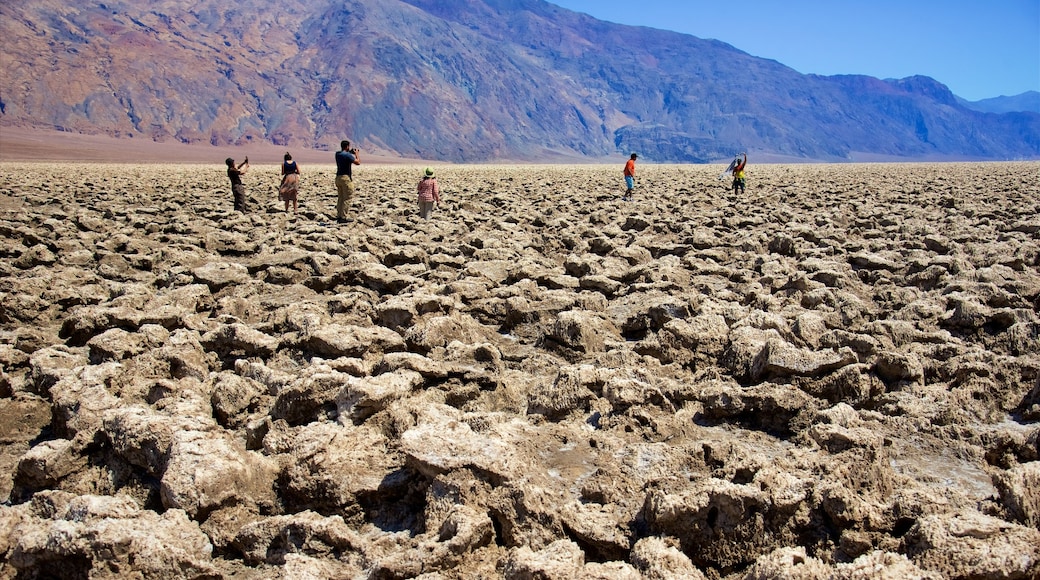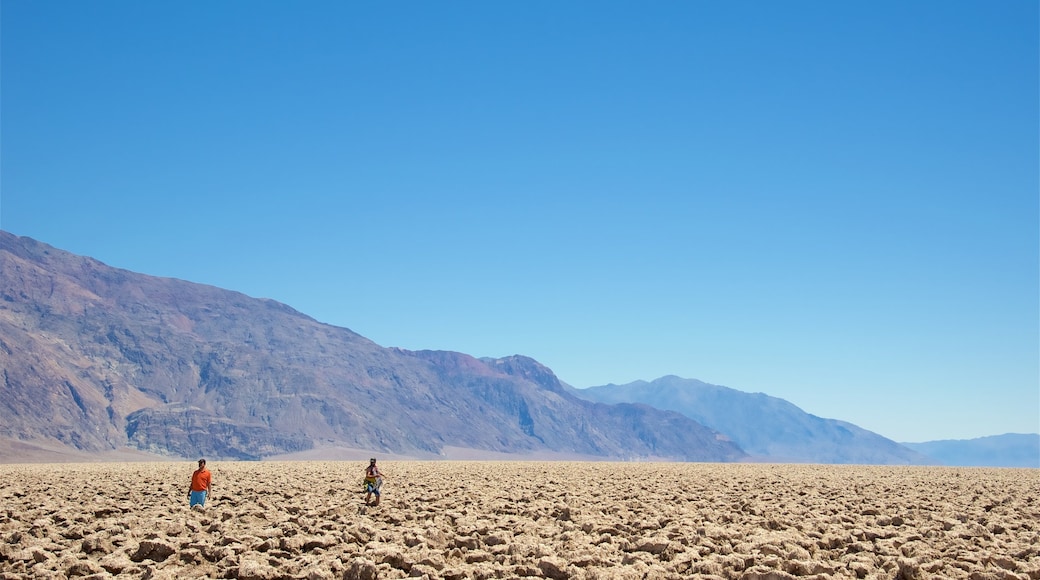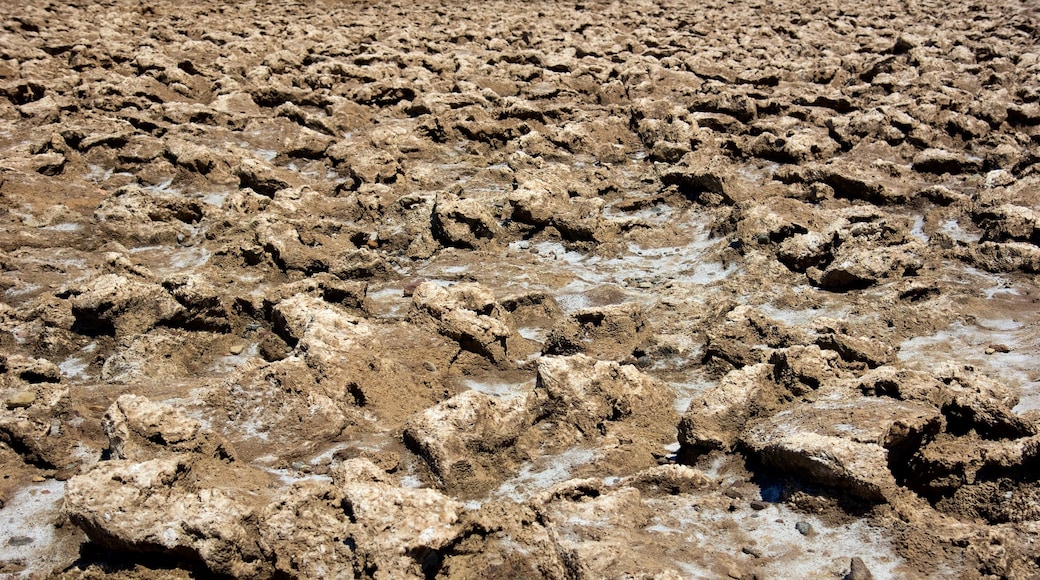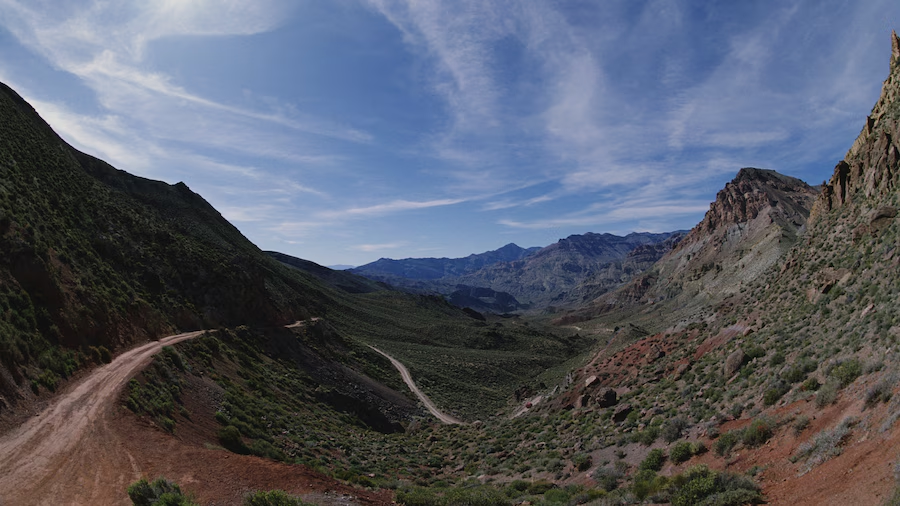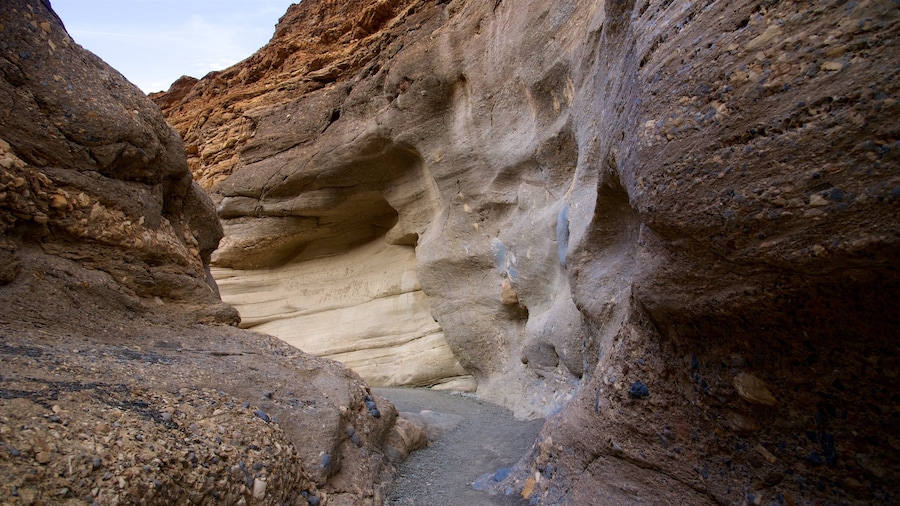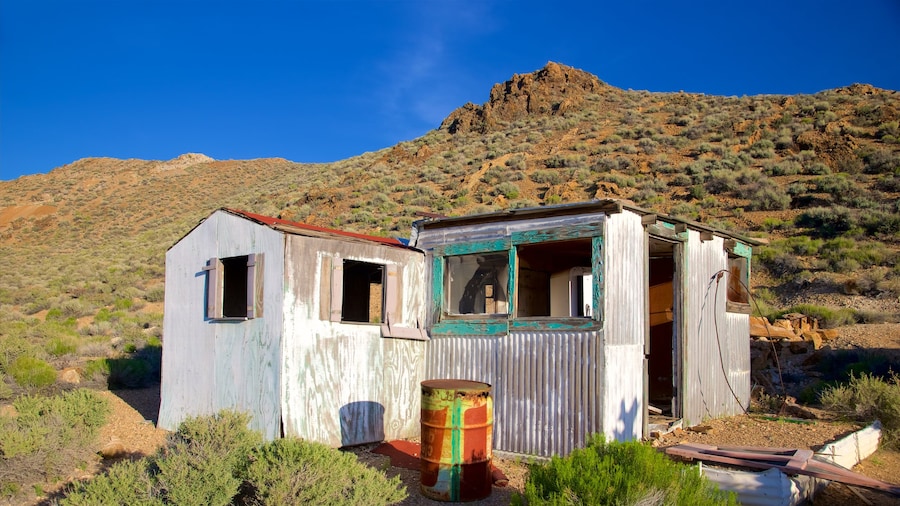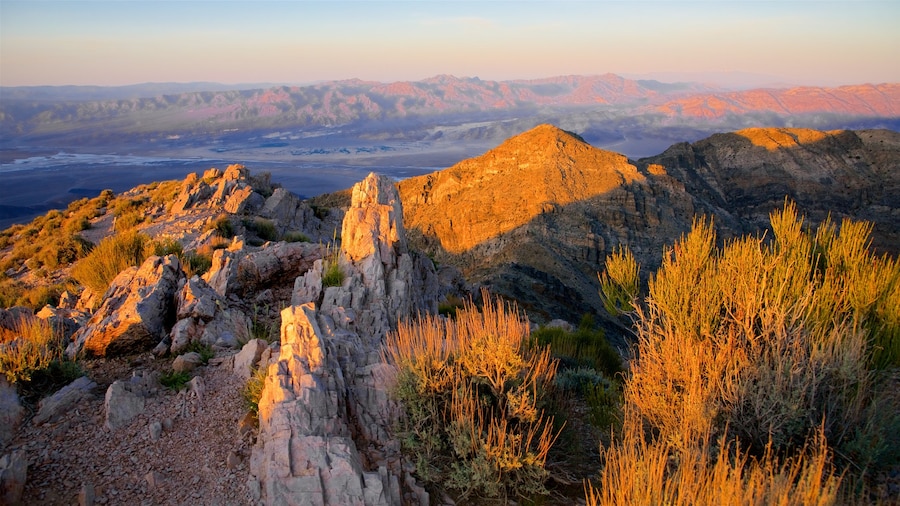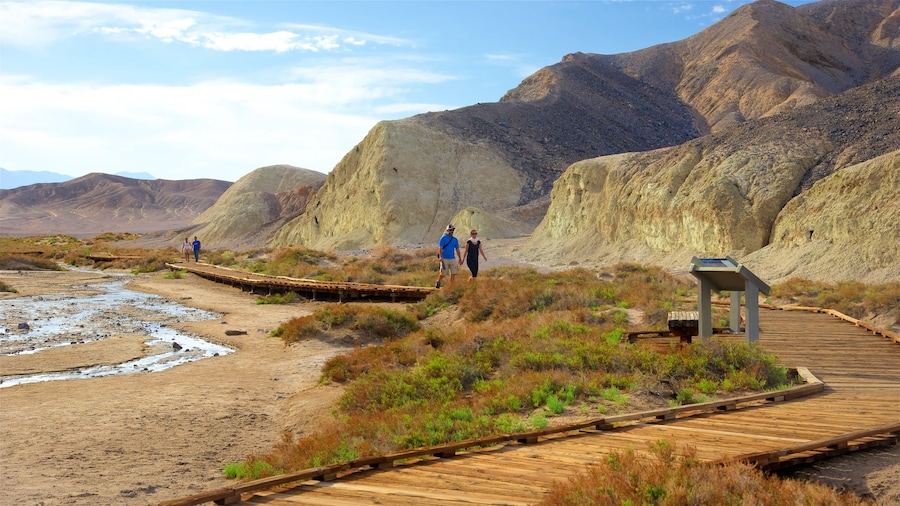Clamber over the serrated surface of this enormous saltpan in Death Valley, where huge halite salt crystals have sculpted the bottom of a former lake.
The Devil’s Golf Course is a landmark site in the mystical Mojave Desert. According to the National Park Service guidebook in 1934, the surface is so rough that “only the devil could play golf” on it. Marvel at the expansive saltpan, one of the key features of Death Valley National Park and a fascinating example of the region’s otherworldly landscape.
Drive your car into the heart of this moonscape-like saltpan and take a look around. You’ll see craggy crystalline halite salt deposits throughout the floor of the valley, which spike up into jagged and sculpted formations. Try your luck at clambering over the uneven surface.
The saltpan was created when an ancient lake evaporated. Over 150,000 years ago, Lake Manly once covered this section of the valley and was up to 30 feet (9 meters) deep. Snow and distant melting glaciers from the Sierra Nevada mountains fed the lake. The lake dried up and left behind dissolved minerals. Over the years, these mineral deposits have weathered and eroded. See the mesmerizing landscape left behind.
Unlike the Badwater Basin, which is known to occasionally flood and evaporate, the Devil’s Golf Course has a higher elevation and remains above the flood level. Gaze out across the rugged surface of the saltpan and you can see that it hasn’t been smoothed over by floodwaters in many years. Look closely the tiny salt spires are actually growing. If you return in 35 years and have an extremely keen eye, you might notice that the salt-crystal formations have expanded by an inch.
The Devil’s Golf Course is located in Death Valley National Park, which has an entry fee. Reach this spot easily via the road leading to Badwater Basin. There is a small parking lot at the end of a sandy road. Be very careful when exploring the rugged terrain, as the salt formations are quite sharp. If you’re disappointed that this destination isn’t a real golf course, book a tee time for 18 holes at nearby Furnace Creek at 214 feet (65 meters) below sea level.
